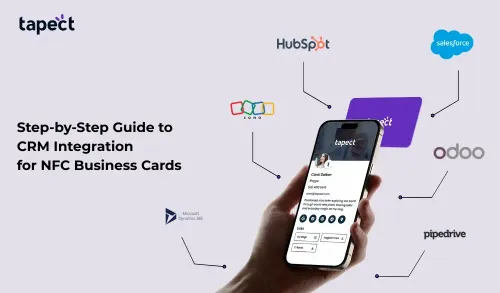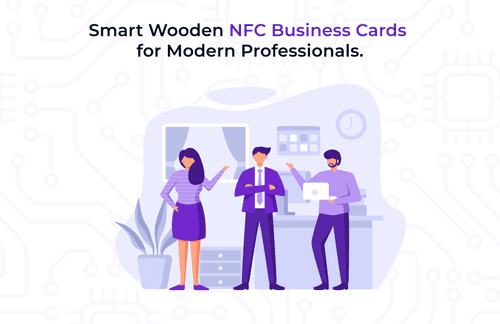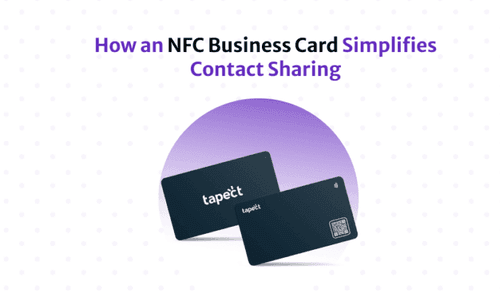Technology is shrinking the world, and business is no exception. With remote work becoming the norm, effective networking is more crucial than ever. One powerful tool for networking is NFC (Near-Field Communication) technology. NFC cards, small chips with a range of applications, are particularly useful for building relationships with new business partners. This guide will cover everything you need to know about using NFC cards for networking and relationship-building.
What is an NFC Card?
An NFC card, or Near Field Communication card, is a contactless smart card utilizing radio-frequency identification (RFID) technology. These cards enable seamless data exchange and transactions. For instance, when you top up your phone or tablet at an NFC terminal, the device reads your payment and updates its database, allowing you to use your device without needing to enter your PIN every time.
NFC cards have a multitude of uses. For Android smartphone users, the Google Play Store offers various apps that utilize NFC technology. Once installed, these apps enable you to make payments at locations equipped with tap-and-go NFC readers.
Beyond home convenience, NFC cards can be incredibly useful in various settings. Many airlines now offer in-flight Wi-Fi access through branded terminals near the exit doors. To sign up for this service, simply insert your eligible NFC-enabled card into one of the readers and follow the onscreen instructions.
In essence, NFC cards simplify transactions and interactions, making them an invaluable tool in modern networking. Whether you’re at home, traveling, or meeting new business contacts, NFC technology can help streamline your interactions and build stronger connections.
What Are the Benefits of an NFC Card?
NFC (Near Field Communication) technology has been around for a few years and is rapidly becoming a popular way to connect devices and people. It’s used in ATMs, point-of-sale machines, and some cars for making payments and accessing features. However, NFC cards offer much more than just payment capabilities; they can help you stay connected with friends, family, and business contacts. Here are five reasons why using an NFC card is an excellent networking tool:
1. Share Photos and Videos with Ease
One of the most convenient uses of an NFC card is sharing photos and videos. Simply tap the card against another device or person’s NFC-enabled device, and you can instantly share digital copies of your media. This feature is particularly useful when you don’t have easy internet access or want to avoid using your phone’s data plan while traveling.
2. Effortless Connection with Other NFC Devices
NFC cards make connecting with other NFC-enabled devices straightforward. Just hold your device near another NFC reader, and data will begin transferring automatically. This functionality is perfect for reading articles, sharing contact information, or tracking fitness progress with ease.
3. Enhanced Security and Convenience
NFC technology provides a secure way to share information between devices without needing complex passwords or PINs. This makes NFC cards an ideal tool for initiating secure transactions and sharing important files and contacts, enhancing both convenience and security in your networking efforts.
4. Versatile Applications
Beyond payments and data sharing, NFC cards can be used in various contexts, such as accessing exclusive deals and discounts from merchants. Many organizations now use NFC cards to facilitate networking among members or customers, allowing for seamless connections and information sharing.
5. Environmentally Friendly and Cost-Effective
Using NFC cards reduces the need for paper business cards, contributing to environmental conservation. Since NFC cards are reusable and can be updated digitally, they minimize waste and save costs associated with printing new cards.
Why Should You Get an NFC Card?
NFC technology is gaining traction in networking and business due to its ease of use and security features. NFC cards enable effortless connections with other NFC-enabled devices, making them ideal for securely sharing information and initiating transactions. They are convenient, secure, and perfect for networking and business purposes.
How to Choose the Right Size for Your Business Cards
When selecting the size of your digital business cards, it’s essential to consider the specific needs of your business. Not all card sizes are suitable for every purpose. Here are some factors to keep in mind:
Comfortable Handling: The card should fit comfortably in your hand.
Visibility of Information: The card should be large enough to display your full contact information while remaining portable.
Printer Compatibility: Ensure the card size is compatible with your printer.
Tips for Choosing the Right Business Card Size
Mini Business Cards: For tradeshows and events with limited space, opt for mini-business cards (3 inches by 2½ inches). These can hold up to four lines of text.
Standard Business Cards: If you have more room, go for standard business cards (4⅛ inches wide by 3½ inches high), accommodating up to eight lines of text and are generally less expensive than mini-cards.
Large Format Cards: For printing on overhead projectors or large display devices, choose a larger format (6½ inches wide by 4 inches high or more) to give your audience plenty of space to read your information.
Different Types of NFC Cards
NFC cards come in various types, each embedded with a small chip that enables communication with other NFC-enabled devices. These cards are highly useful for networking because they allow for easy connection with people who have the same card.
Examples of NFC Card Uses
Bank Cards: Connect effortlessly with other customers of the same bank.
Merchant Programs: Access exclusive deals and discounts from participating merchants.
To determine if your card supports NFC technology, check the back of the card. Many modern cards include NFC technology, making it easier to take advantage of these benefits.
Conclusion
NFC (Near Field Communication) cards are revolutionizing networking and business interactions by providing versatile and secure tools for easy data sharing, improved connectivity, and reducing environmental impact through the elimination of paper business cards. Beyond simple payments, NFC cards facilitate effortless sharing of photos and videos, seamless connections with other devices, and access to exclusive deals, making them practical in various settings such as airline Wi-Fi access and merchant programs. Choosing the right size for your NFC business cards—whether mini, standard, or large format—ensures ease of use and readability, enhancing networking efficiency. Incorporating NFC cards into your strategy strengthens relationships and boosts business, keeping you ahead in a digitally connected world.



